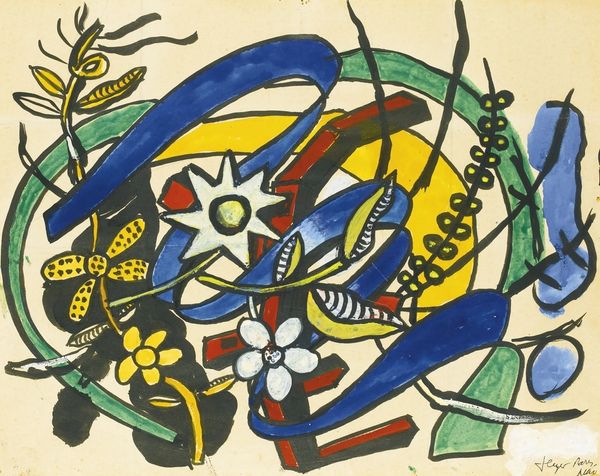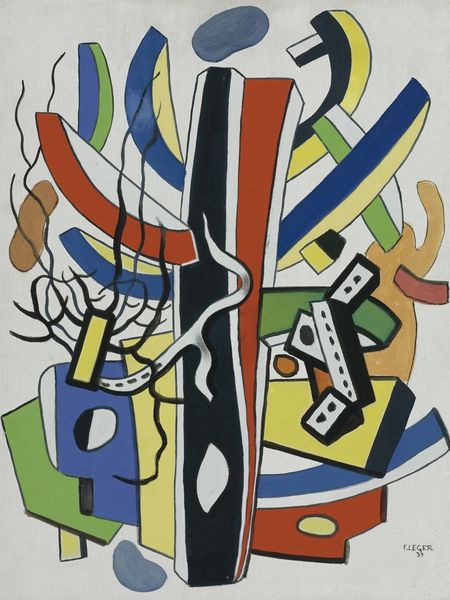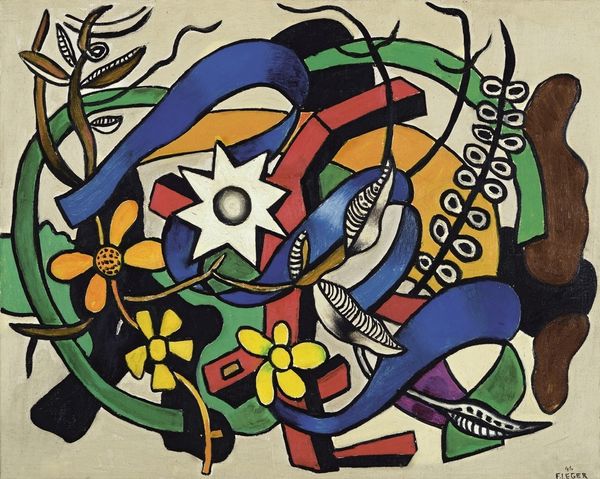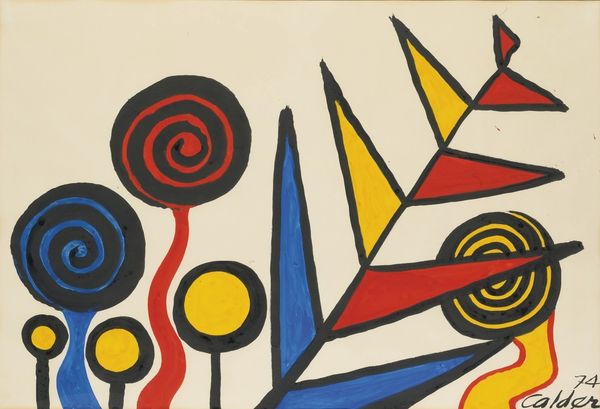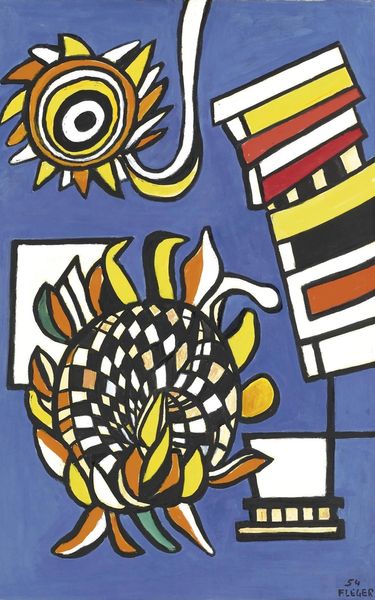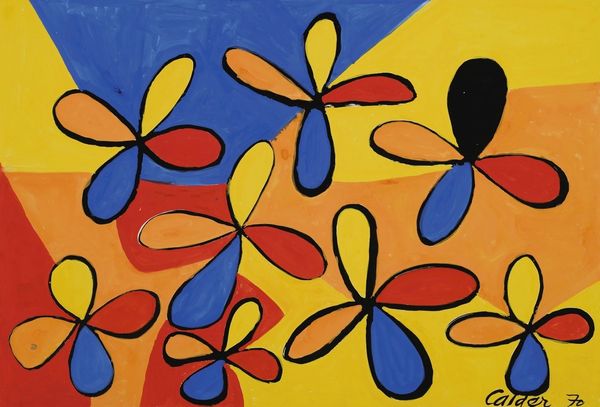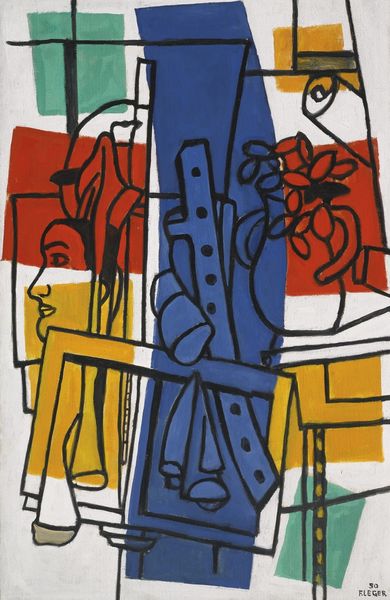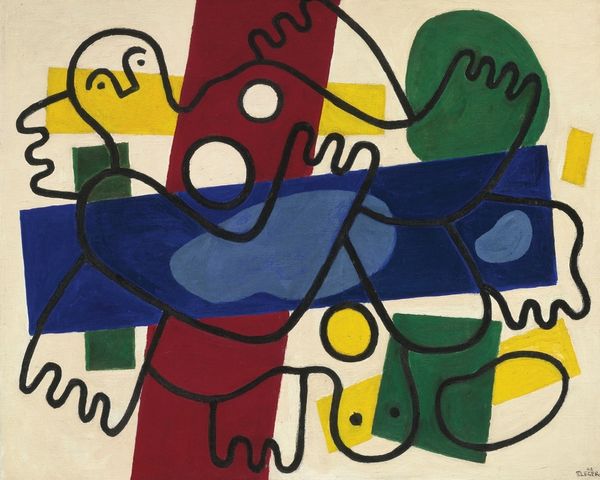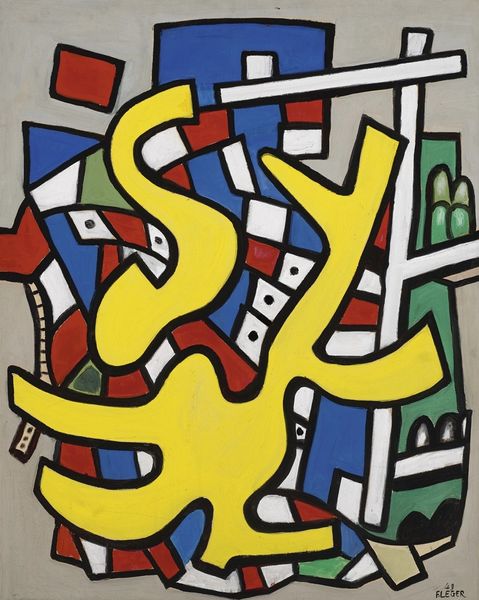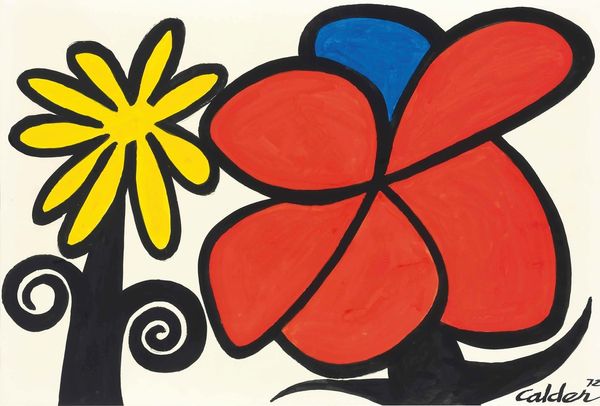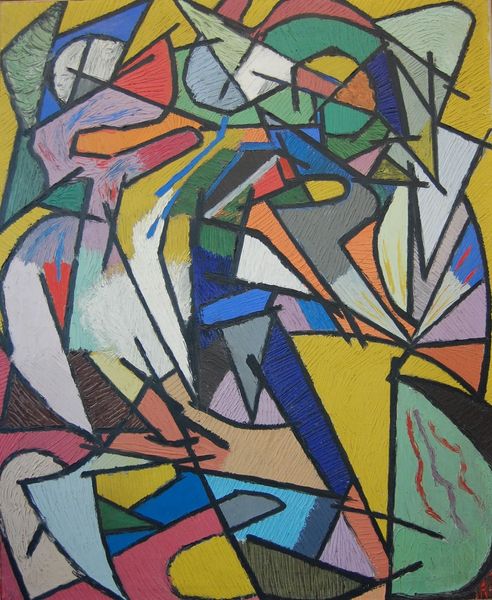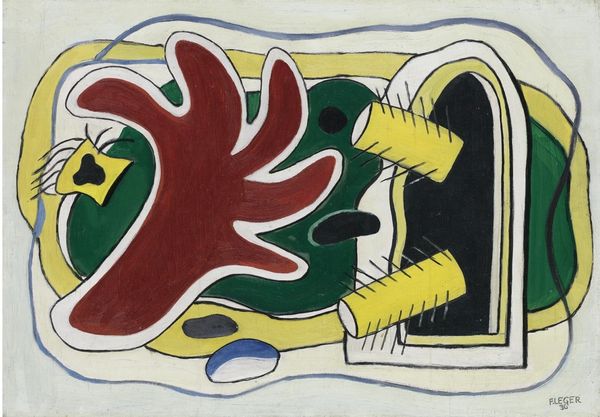
Copyright: Modern Artists: Artvee
Editor: This is Fernand Léger’s "Fleurs et Dominos," painted in 1950 with oil paint. The title translates to “Flowers and Dominos," which is exactly what you see. It's… striking. The stark outlines and contrasting colors are very bold. What do you see in this piece? Curator: The piece offers an engaging study of Léger's late-career formalism. Observe how he reduces natural and man-made forms—flowers and dominoes—to basic geometric shapes. The contrast in subject is intriguing, wouldn't you say? Editor: I see what you mean. He almost flattens the objects and eliminates traditional perspective. But what’s the effect of putting the natural alongside the artificial like this? Curator: Precisely. Note the interplay between organic and geometric shapes. Léger balances the curvilinear forms of the flowers against the sharp-edged dominoes. The strong lines serve to compartmentalize each object within the piece. Ask yourself: does this speak to the mechanization of modern life? Editor: It does create that sense of a machine-like construction…everything is so carefully delineated. Is the emotional impact intended? It feels quite neutral to me, devoid of sentimental feelings despite depicting flowers. Curator: Léger is less interested in emotional expression than in exploring the formal relationships between shapes and colors. It is about the inherent aesthetic quality of these formal structures. Would you say that each distinct segment could function independently while also contributing to a collective form? Editor: Yes, I do see that. Viewing it purely in terms of shapes, colours, and construction helps appreciate what Léger achieves in "Fleurs et Dominos." Curator: Indeed. The dialogue between these geometric and figurative shapes create both harmony and tension. Editor: I’ve definitely got a new appreciation for how much can be said through purely formal elements. Thanks!
Comments
No comments
Be the first to comment and join the conversation on the ultimate creative platform.
